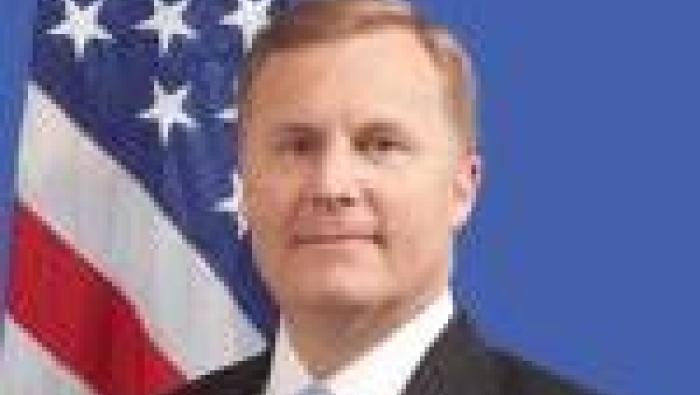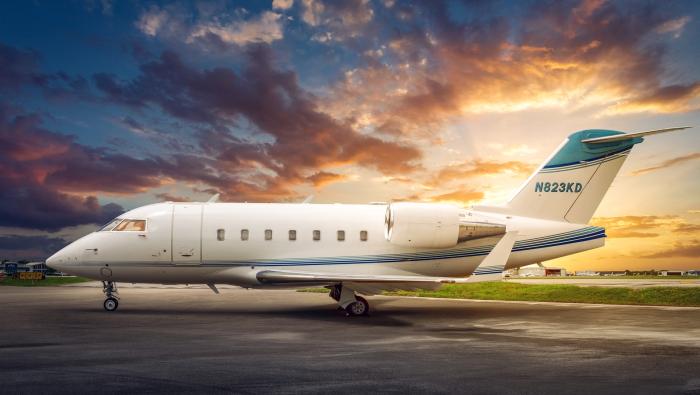The National Business Aviation Association presents Pilot Flying Safety Awards each year to the member company pilots with exemplary safety records. To be eligible for an award, a pilot must have flown corporate aircraft 1,500 hours without an accident, but the actual number of safe hours flown by many of the 2007 top pilots, who have already received their awards, are much higher. The top recipient, George Thomsen, has logged 30,136.
NBAA Convention News talked with the top pilots–Thomsen of Aviation Management Systems; William White, Keller Companies; William Smith, The Conair Group; Steven Lyddon, Lyddon Aero Center; and Paul Stinebring, Emerson Flight Operations–to learn more about their safe-flying secrets. Together, the top five have flown 138,773 safe corporate flight hours.
George Thomsen
pilot
Aviation Management Systems
Naples, Fla.
30,136 Hours
George Thomsen now has 18 type ratings and is a Gold Seal flight instructor and an advanced ground instructor. Currently flying Part 91 and Part 135 flights, he said he finds he is busier than ever. Because of a “major pilot shortage,” especially on the Astra SPX/G100 aircraft, he is flying for companies in Fort Lauderdale, Opa Locka and Sarasota, Fla., as well as for his employer.
Aviation Management Systems was formerly based at Orange County Airport in Santa Ana, Calif., but now is headquartered in Naples. Before joining AMS, Thomsen operated his own air charter service at Orange County Airport, flying for Frank Tallman of Tallman Aviation. Tallman performed aviation work for the film industry with partner Paul Manz, and Thomsen recalls flying for some 30 movies with Tallman. “I have a list; there are so many I just don’t remember them all,” he told NBAA Convention News. One that stands out, he said, was Catch-22, Mike Nichols’ 1970 adaptation of Joseph Heller’s World War II novel, for which Thomsen flew a B-25.
Before that, Thomsen flew as a corporate pilot, mostly in the timber and mining industries, he said. He did three tours in Vietnam, flying AC-130s and KC-135s. He credited the Air Force for furthering his flying career. “Before I joined the Air Force, I flew as a hobby. I grew up near Fullerton Airport,” he told NBAA Convention News, “and had no intention of flying professionally. But it turned into a career because of the Air Force–they made my choice for me. I had all the ratings and had done flight instruction at Orange County. When I went into the Air Force they said, ‘You will fly.’”
He reported that since the move to Naples, “Aviation Management Systems is still growing with aircraft sales, management and contract pilot services. I have also started a company, Creative Technology Solutions of Naples, which is in the computer management business involved in Web site design and computer security and business systems for aviation and general businesses.”
T. William (Bill) White
chief pilot
Keller Companies
Manchester, N.H.
29,454 HoursBill White has been on NBAA’s top-five safety pilot list since 1992, and reached the top of the list in 1998. He’s near the top again this year, with 29,454 hours. He told NBAA Convention News that his own good safety record reflects that of his fellow crewmembers. “We have a highly experienced crew with lots of time in [the Mitsubishi MU-2], an average of 10,000 hours plus for each pilot,” he said. Keller operates two MU-2s, the first one purchased in 1974, plus a Dassault Falcon 10.
White also credits good training, good equipment and excellent maintenance for the safety record. He said it is important to have strong relationships with skilled, safe pilots, adding, “we have to know the pilots” being hired.
White joined Keller in 1969. “I was the only pilot then,” he said, “and the airplane I flew was a Cessna 310 Riley Rocket.” Today, Keller has two full-time pilots, besides White: a full-time chief of maintenance who also flies the Falcon 10 as copilot and a part-time pilot fully qualified in the MU-2. The flight department also includes three additional mechanics, including White’s son, Michael.
Keller Companies is a group of eight family-owned companies manufacturing energy-efficient construction materials, with a major product being the Kalwell translucent panel.
The flight department primarily services the installation and technical departments as well as sales, White said, with a little flying for management. Most flights are domestic, with a few Canadian trips each year.
He said that his favorite corporate airplane to fly is still “Mitsubishi MU-2B-26 M N40KC. It has 18,000 hours on airframe. The engines were recently overhauled, it has updated avionics and it runs well.”
White has served on the NBAA MU-2 technical committee. He is also a member of the State of New Hampshire Aviation Users Advisory Board. “I represent corporate flight department issues. The board has representatives of airport managers, commercial aviation, pure general aviation and businessman pilots,” he said.
Willilam Smith
chief pilot, retired
The Conair Group
Franklin, Pa.
27,250 Hours
“It’s been great,” William Smith said, summing up his 37 years as chief pilot for Conair before retiring last year. He started with the company as chief pilot when the fleet consisted of a Cessna 182, and has seen the company’s flight department expand with a Cessna 310 and a 401, a King Air 90 and 100, a Citation 560 and an Excel.
Smith started out in aviation at age 14 working at the local airport in Lynchburg, Va., where he grew up. He pumped gas and washed airplanes for the chance of an airplane ride. He earned his private, commercial, instrument and flight instructor ratings. After logging more than 6,000 hours as a flight instructor in Lynchburg, he became chief pilot for Penn Aire, a charter and flight school operation in Franklin, Pa.
He credits his safe record to the crew’s twice-a-year training at FlightSafety International for more than 30 years. “It’s what keeps us safe and aware,” he said.
His favorite corporate airplane to fly, he said, was the Citation Excel, which he describes as “a nice flying airplane, with lots of performance.”
Now that’s he’s retired, he said, “It’s nice to be able to pick the weather I fly in.”
Steven Lyddon
president
Lyddon Aero Group
Liberal, Kans.
26,584 Hours
Lyddon Aero Center started operations flying a Cessna 206, then moved up to its current fleet of aircraft from a Cessna 210 to a Conquest II and a Beechjet 400A.
With eight pilots, and 14 employees total, the Aero Center is run by president Steven Lyddon, who also serves as check airman, line pilot and director of maintenance. He has been with the company for 34 years. “This was my first job out of A&P and pilot school,” he noted, adding that he has been flying as a line pilot for 18 years.
His favorite corporate airplanes are the Citation, the Beechjet and the Aerostar. His interest in aviation dates back to growing up around the small airport FBO in La Junta, Colo., that his father owned. He attributes his long safety record to “good training, some ability, some luck and good equipment.”
Lyddon Aero Center is a charter and FBO organization based at Liberal Mid-America Regional Airport in Kansas.
Paul Stinebring
director of administration and
international operations
Emerson Flight Operations
St. Louis, Mo.
25,349 Hours
When NBAA Convention News last talked to Paul Stinebring, he was completing his Falcon 7X training and now he holds a DA-7X type rating. His NBAA corporate safe flying hours exceed 25,000 but his total time is 29,000 hours.
Stinebring took an introductory airplane ride at the age of 21 and that hooked him on aviation, he said. He went to Parks College in Cahokia, now part of St. Louis University, initially with an interest in maintenance and engineering. He did maintenance work for TWA and continued flying at St. Louis Lambert Field. After getting his flight instructor rating he started teaching others to fly.
In 1967 he started flying a Twin Beech for the Bank of St. Louis, at Spirit of St. Louis Airport, then a King Air. After seven years with the bank, he joined Emerson in 1974 as a pilot and rose through the ranks. Currently, as director of administration and international operations, he draws upon his 39 years of experience to aid in the management of the company’s aviation unit and to coordinate projects with the local FAA office.
He continues to fly frequently. His FAA ratings also include ATP and flight instructor and his aircraft type ratings, in addition to the new Falcon rating, include the Cessna Citation 500; Dassault Falcon 10, 20 and 50; Gulfstream 159, Hawker HS 125, Lockheed JetStar and Learjet. In addition to pilot ratings, Stinebring also is an A&P mechanic. He lists the Falcon 900EX and the JetStar among his favorite airplanes to fly.
Stinebring has retired from the NBAA Board of Directors, which he joined in 1995, having served on the International Operations Committee and the Air Traffic and Airspace Committee. “My work with NBAA has always been supported by the company,” he told NBAA Convention News. Stinebring has served on the Government Affairs Committee and is now a representative to the International Aviation Business Council, a group of 14 business aviation organizations around world. “IBAC gives us a voice in Montreal, representing business aviation at ICAO [International Civil Aviation Organization].”
He attributes his outstanding safety record to “professional training and disciplined use of standard operating procedures developed for all airplanes, and standards developed as a group. Everyone is involved as a department. We don’t always fly with the same people,” he said.
“Safety is a culture within the department; it starts with the chairman of the company and goes down to the people who fly.”







